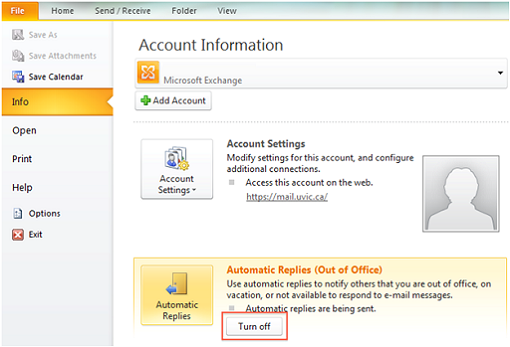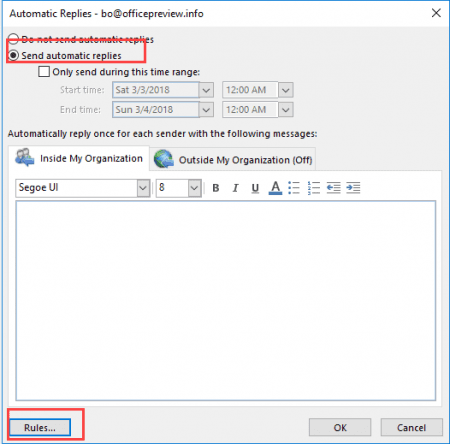:max_bytes(150000):strip_icc()/hands-of-businesswoman-using-laptop-in-a-cafe-758300173-5a300362ec2f640037fb1dff.jpg)
- Out Of Office Reply In Outlook For Mac
- Out Of Office Reply In Outlook For Mac
- Out Office In Outlook 2010
Original KB number: 2648915
Out Of Office Reply In Outlook For Mac
Summary
The Out of Office Assistant works with the server that is running Microsoft Exchange Server to automatically reply to email messages while you are out of the office. Because the Exchange server sends the messages (not Outlook), Outlook does not need to be open for the reply messages to be sent. Outlook for Mac works with Microsoft Exchange, Microsoft 365, Outlook.com (including Hotmail and MSN), Gmail, Yahoo Mail, and iCloud Learn more about Microsoft 365 Microsoft 365 is a cloud-based subscription service that brings together premium versions of Word, Excel, PowerPoint, Outlook and OneDrive, with the best tools for the way people. Using the “Automatic Replies (Out of Office)” and “Out of Office Assistant.” If you have an Exchange account (and are running Microsoft Office Outlook 2019, Outlook 2016, 2013, 2010 and Outlook for Office 365) then you can use the “Automatic Replies (Out of Office)” and “Out of Office Assistant.”.
This article contains information about the compatibility of Microsoft Outlook for Mac and Apple iCloud.
Outlook for Mac does not support Apple iCloud calendar (CalDAV) and contact (CardDAV) synchronization.
Outlook for Mac does support iCloud Mail. For steps on how to configure your iCloud email account in Outlook for Mac, go to the More Information section of this article.
More information
Out Of Office Reply In Outlook For Mac

To configure your Apple iCloud email account in Microsoft Outlook for Mac, follow these steps:
Start Outlook for Mac.
On the Tools menu, select Accounts.
Select the plus (+) sign in the lower-left corner, and then select Other E-mail.
Enter your E-mail Address and Password, and then select Add Account.
Note
The new account will appear in the left navigation pane of the Accounts dialog box. The Server Information may be automatically entered. If not, follow the remaining steps to enter this information manually.
Enter one of the following in the Incoming server box:
imap.mail.me.com(forme.comemail addresses)mail.mac.com(formac.comemail addresses)imap.mail.me.com(foricloud.comemail addresses)
Select Use SSL to connect (recommended) under the Incoming server box.
Enter one of the following in the Outgoing server box:
smtp.mail.me.com(forme.comemail addresses)smtp.mac.com(formac.comemail addresses)smtp.mail.me.com(foricloud.comemail addresses)
Select Use SSL to connect (recommended) under the Outgoing server box.
Select Override default port under the Outgoing server box, and then enter 587 in the Outgoing server port text box.

After you have entered the incoming and outgoing server information, Outlook for Mac will start to receive your email messages.
Note

Out Office In Outlook 2010
You can select Advanced to enter additional settings, such as leaving a copy of each message on the server.